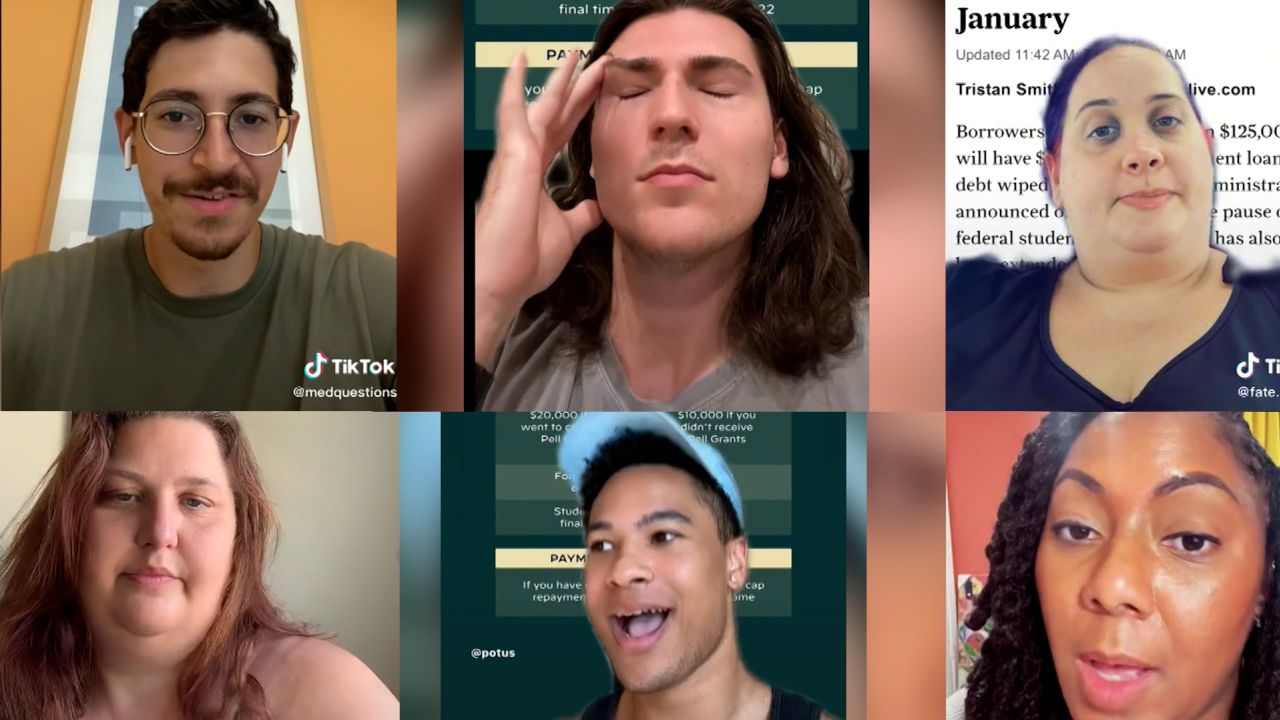President Joe Biden’s student loan plan is a potential game changer for Americans drowning in debt. And yet the impact on the economy at large is likely to be so tiny that it will be hard to measure.
Biden announced Wednesday that his administration will forgive $10,000 for borrowers who make less than $125,000 per year. Low-income borrowers who went to college on Pell Grants will receive up to $20,000 in student loan forgiveness.
This debt relief will give tens of millions of borrowers some breathing room at a time when the cost of living has skyrocketed.
Critically, the cancellation of student debt is being paired with a plan to lift the freeze on federal student debt payments, beginning in Jan. 2023. That means many Americans who haven’t had to pay down student loans since March 2020 will have to begin doing so, eating into their cash flows.
Despite fears that Biden’s student debt relief will fuel already-crippling inflation, economists say the combined impact will be minimal on the economy at large.
“The end of the moratorium will weigh on growth and inflation, while the debt forgiveness will support growth and inflation,” Moody’s Analytics chief economist Mark Zandi told CNN. “The net of these cross-currents is largely a wash.”
Moody’s estimates that the combined impact will reduce real GDP in 2023 by 0.05 percentage points, drive down unemployment by 0.02 percentage points and cut inflation by 0.03 percentage points. In other words, a very tiny effect.
“We’re not talking about raising or lowering inflation by a percentage point or even a half a percentage point. We’re talking about a really small impact,” Dean Baker, co-founder of the Center for Economic and Policy Research, told CNN in a phone interview. “But for individuals this makes a big difference. It wipes out more than half the debt for more than half the borrowers. That’s a big deal.”
Millions of borrowers impacted: The typical undergraduate student with loans graduates with nearly $25,000 in debt, according to a Department of Education analysis cited by the White House.
Up to 43 million borrowers will receive relief from Biden’s student debt plan, including eliminating the full remaining balance for about 20 million borrowers, according to the White House.
The inflationary impact would have been larger if Biden did not impose an income threshold on the debt relief or if he heeded calls from some progressives to wipe out $50,000 in student debt.
$300 billion price tag: Of course, there is a cost to canceling student debt. And that cost will be picked up by taxpayers just when deficit reduction had suddenly become a bipartisan trend in Washington.
A one-time cancellation of $10,000 for each borrower earning less than $125,000 will cost the government approximately $300 billion, according to an estimate this week from the Penn Wharton Budget Model. (The Penn Wharton model did not include the cost of wiping out up to $20,000 in student debt for Pell Grant recipients).
Although $300 billion isn’t massive for a $25 trillion economy, the cost of the student debt forgiveness would cancel out the projected federal budget deficit savings from the just-passed Inflation Reduction Act.
“All the deficit reduction will be wiped out,” Marc Goldwein, senior vice president and senior policy director for the Committee for a Responsible Federal Budget, told CNN’s Poppy Harlow.
Note that the White House has hailed the deficit reduction aspect of the Inflation Reduction Act as an important inflation-fighting measure. And this marked a significant shift after years of both parties adding to America’s mountain of debt to fight the Covid-19 pandemic.





















